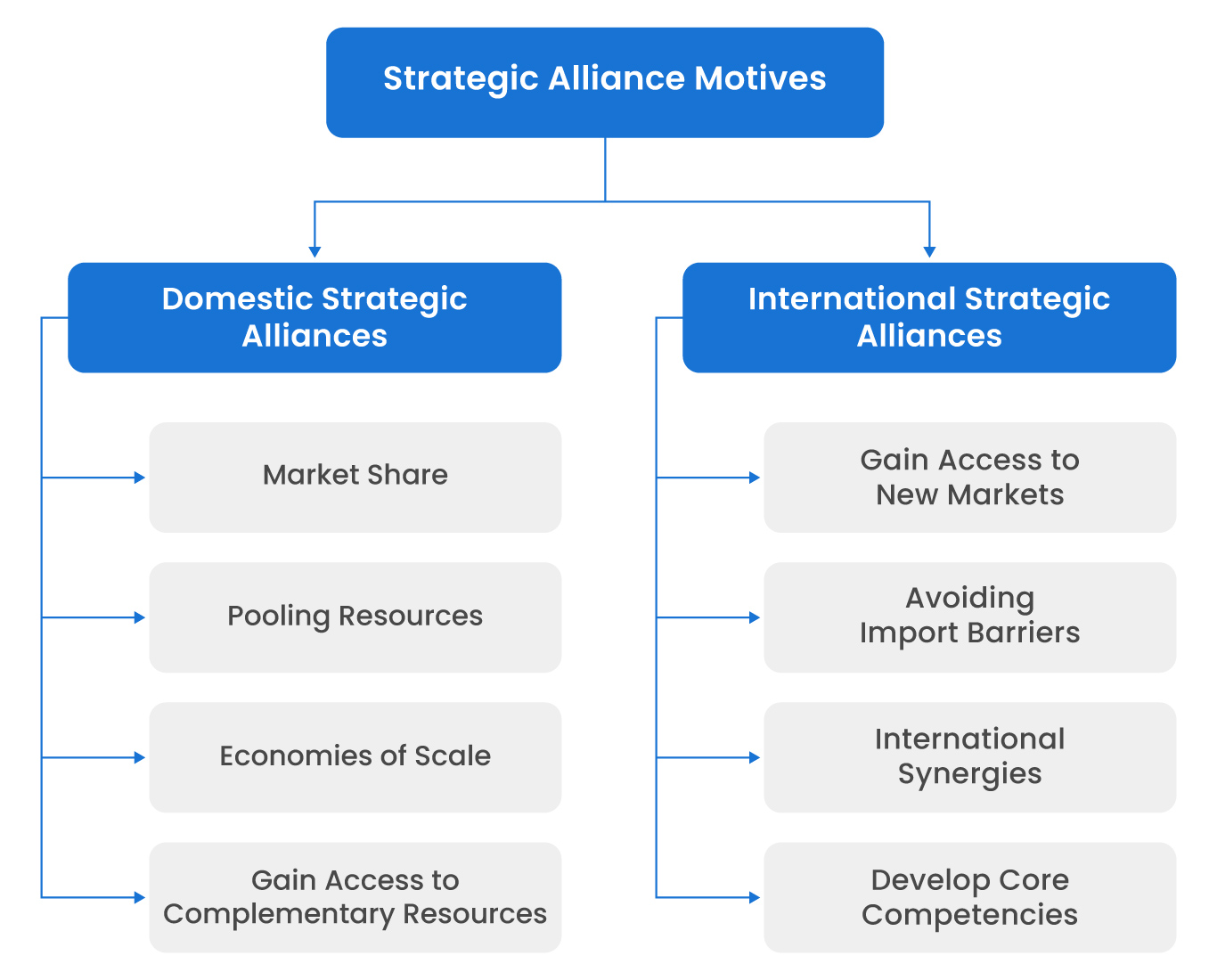Strategic Alliances
What are Strategic Alliances?
Definition:
Strategic alliances are collaborative agreements between two or more companies aimed at achieving mutually beneficial goals. These partnerships involve sharing resources, expertise, and market access to capitalize on opportunities, address challenges, and drive innovation within the business ecosystem.
Analogy:
Think of strategic alliances as a symphony orchestra where each instrument plays a unique role in creating harmonious music. Similarly, companies in strategic alliances work together, leveraging their strengths and expertise to achieve collective success and create value in the marketplace.
Further Description:
Strategic alliances encompass a variety of collaborative arrangements, including:
Joint Ventures: Companies pool resources and expertise to pursue specific projects or ventures, sharing risks and rewards.
Distribution Partnerships: Companies collaborate to distribute each other’s products or services, leveraging complementary strengths and market reach.
Technology Sharing Agreements: Companies exchange technologies or intellectual property to enhance product offerings or develop new innovations.
Co-Marketing Initiatives: Companies join forces to promote products or services through joint marketing campaigns, reaching broader audiences and maximizing impact.
Research and Development Collaborations: Companies collaborate on research and development projects to drive innovation and accelerate product development cycles.
Why are Strategic Alliances Important?
Access to Resources and Expertise: Strategic alliances allow companies to access resources, capabilities, and expertise that may not be available internally, enabling them to pursue growth opportunities more effectively.
Risk Sharing: By sharing resources and risks, companies can mitigate the potential downsides of pursuing new ventures or entering new markets.
Accelerated Innovation: Collaborative partnerships foster innovation by bringing together diverse perspectives, technologies, and ideas, leading to the development of novel solutions and products.
Market Expansion: Strategic alliances provide access to new markets, distribution channels, and customer segments, helping companies expand their reach and drive revenue growth.
Competitive Advantage: By leveraging complementary strengths and resources, companies can gain a competitive edge in the marketplace, enhancing their market position and differentiation.
Examples and Usage:
Apple and Nike: Apple and Nike formed a strategic alliance to develop the Nike+ running app, integrating Nike’s expertise in sports apparel with Apple’s technology and user experience design.
Starbucks and Spotify: Starbucks and Spotify partnered to create a unique in-store music experience, allowing customers to influence the playlist through the Starbucks app and enhancing the overall customer experience.
Toyota and Tesla: Toyota and Tesla collaborated on electric vehicle technology, with Toyota investing in Tesla and sharing its manufacturing expertise, while Tesla gained access to Toyota’s production facilities and supply chain capabilities.
Key Takeaways:
- Strategic alliances involve collaborative agreements between companies to achieve shared goals and create mutual value.
- They encompass various forms of collaboration, including joint ventures, distribution partnerships, technology sharing, co-marketing initiatives, and research collaborations.
- Benefits of strategic alliances include access to resources and expertise, risk sharing, accelerated innovation, market expansion, and competitive advantage.
- Examples of strategic alliances span various industries and highlight the diverse ways companies can collaborate to drive growth and innovation in the marketplace.





